Sighting In An Elk Rifle
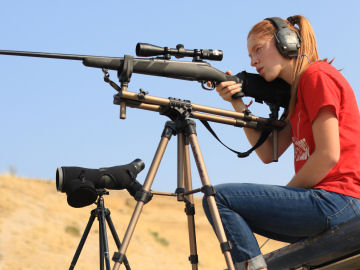
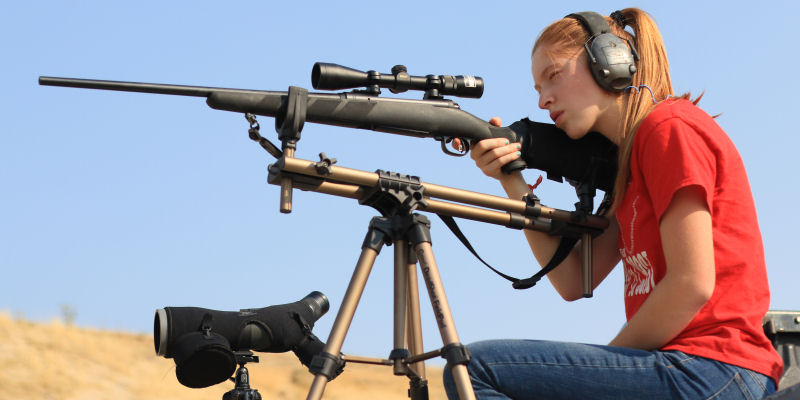
With September in the rearview mirror, most rifle seasons are now just around the corner. If you haven’t sighted in your elk rifle yet, it’s time to get serious. You may be asking yourself, “What could this long-time bowhunter possibly have to share about sighting in your elk rifle?” Well, for starters, if you’re a long-range shooter, the answer is ‘Nothing!’ There are hunters on the Elk101.com Pro Staff far more qualified than me to give advice on extreme distance shooting. However, if your elk hunting typically results in shots at “normal” hunting ranges, I might be able to provide a few things to consider.
First of all, I’ll define “normal” ranges as inside 400 yards. That’s not really a line in the sand, but a general guideline as to the limits of my rifle hunting experience. My experience comes from having a wife and three kids who have been rifle hunting for the last 8 years. When my family first started rifle hunting, I knew our shots would need to be somewhat close and they would need to use a system that was easy to understand when the pressure was on. Dialing in the system we now use was a long process and full of mistakes, but has worked very well for us now for several years. My wife, two of my daughters, and my oldest son have taken 4 elk and 5 deer in the last 8 years and none of them have missed a shot yet (knock on wood). I can promise you that it is not because they shoot hundreds of rounds a year and are crack shots. Their success has come from a lot of factors. What I want to focus on today is how we sight in our rifles.
 I consider two schools of thought when sighting in our rifles. The first is the concept of sighting in your rifle “X” inches high at 100 yards. Then, based on your bullets ballistics, you can calculate the distance you could hold on the elk and still hit within an elk’s vitals. This system is probably the simplest and most used for the hunter not interested in taking extreme shots. It is very fast and easy to use when things are stressful. You just hold “on hair” to your predetermined maximum distance and shoot. I thought long and hard about going this route, but in the end it has a few drawbacks that just didn’t work for me.
I consider two schools of thought when sighting in our rifles. The first is the concept of sighting in your rifle “X” inches high at 100 yards. Then, based on your bullets ballistics, you can calculate the distance you could hold on the elk and still hit within an elk’s vitals. This system is probably the simplest and most used for the hunter not interested in taking extreme shots. It is very fast and easy to use when things are stressful. You just hold “on hair” to your predetermined maximum distance and shoot. I thought long and hard about going this route, but in the end it has a few drawbacks that just didn’t work for me.
First, it is not very precise. This is going to depend a lot on your personality, but my hunting partners (and anyone else who knows me) will tell you I am a little anal about pretty much everything I do. Some might call it OCD. I just call it doing things correctly… 🙂 For me, I don’t like knowing my bullet will hit “somewhere” in an elks vitals. Second, this method requires using a “holdover” for ranges beyond the maximum distance allowed by your bullets trajectory. I didn’t want to tell my daughter or my wife to hold 8 inches over a bull’s back. What eight inches looks like to them through a scope at 400 yards may not be what eight inches looks like to me. Again, too much room for error for my liking.
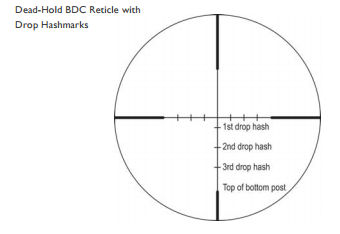 We chose another route and went with a scope that uses a reticle with multiple aiming points. Most of our rifles have Vortex scopes with their Dead-Hold BDC reticle. We also have one rifle with a Nikon scope and their BDC reticle. Both work pretty much the same way and every scope manufacturer has their version. Our reticles consist of a duplex crosshair with multiple aiming points along the vertical plane and the horizontal plane. Basically, you sight in the crosshair to be dead on at a given range. We chose 100 yards. Then you can use the ballistic calculators provided on the manufacturers website to calculate what ranges the other aiming points will hit. (Click here for the Vortex Long Range Ballistic Calculator (LRBC)). The calculators allow you to create a profile that inputs your scope height and your bullet’s ballistics. You’ll find a pretty comprehensive list of all factory loads, or you can input your ballistics if you reload. These calculators allow you to add even more information, but at the distances we are talking about, some of these additional options are not going to make a huge difference.
We chose another route and went with a scope that uses a reticle with multiple aiming points. Most of our rifles have Vortex scopes with their Dead-Hold BDC reticle. We also have one rifle with a Nikon scope and their BDC reticle. Both work pretty much the same way and every scope manufacturer has their version. Our reticles consist of a duplex crosshair with multiple aiming points along the vertical plane and the horizontal plane. Basically, you sight in the crosshair to be dead on at a given range. We chose 100 yards. Then you can use the ballistic calculators provided on the manufacturers website to calculate what ranges the other aiming points will hit. (Click here for the Vortex Long Range Ballistic Calculator (LRBC)). The calculators allow you to create a profile that inputs your scope height and your bullet’s ballistics. You’ll find a pretty comprehensive list of all factory loads, or you can input your ballistics if you reload. These calculators allow you to add even more information, but at the distances we are talking about, some of these additional options are not going to make a huge difference.
Once you input your “dead-on distance” (in our case 100 yards), the calculator will output the distances each of the other aiming points will be sighted in for. We calculate this at the scopes highest power, but the program will let you change the magnification of the scope and it will adjust the distances for you. You can either memorize those distances, or print out a small copy and tape it to the stock of your rifle. In the moment of truth, all you need to do is range your target, look at the printout, and select the closest aiming point. No need to worry about what 12 inches of holdover looks like from 1/4 mile away. Of course, you should take your rifle to the range and verify these aiming points at known distances to ensure they are correct. We have found them to be very accurate so far.
Here is a short video on using the Dead Hold BDC reticle:
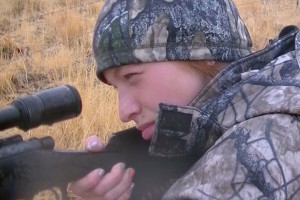 Last year, my 13-year-old daughter drew a good bull elk tag. She practiced all summer, and her routine mainly consisted of picking out various targets from our back door and dry-firing at those targets. That is a different article for another time, but she shot very few actual live rounds throughout the summer.
Last year, my 13-year-old daughter drew a good bull elk tag. She practiced all summer, and her routine mainly consisted of picking out various targets from our back door and dry-firing at those targets. That is a different article for another time, but she shot very few actual live rounds throughout the summer.
The pressure was on during the second week of her elk hunt as her mom was getting a little worried about all the school she was missing. She had passed several shot opportunities at really nice bulls, but on the morning of Day 9, she informed me she was going to kill a bull that day. With rain coming down in sheets, we found a group of bulls and she made a 375 yard shot just behind the shoulder. The bull gave her two more opportunities so she let him have it at 350 in the shoulder and 275 quartering to in the neck. Any of the three would have done the job but she handled it like a pro and killed her second bull in as many years. It all went very smoothly as I whispered the ranges and told her which dot to aim with.
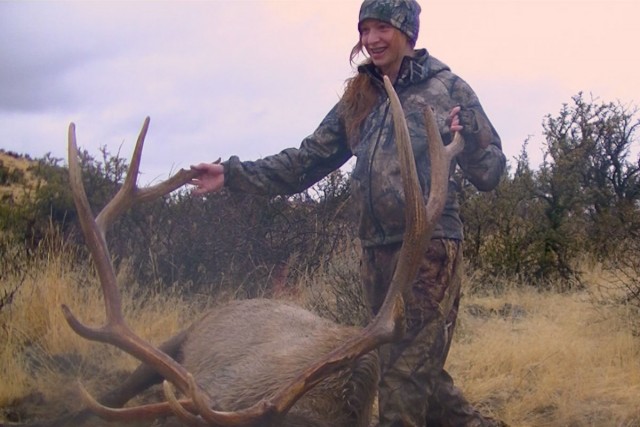 If you’re looking for an easy to use system that works well out to moderate ranges, give this method a try and see what you think.
If you’re looking for an easy to use system that works well out to moderate ranges, give this method a try and see what you think.

